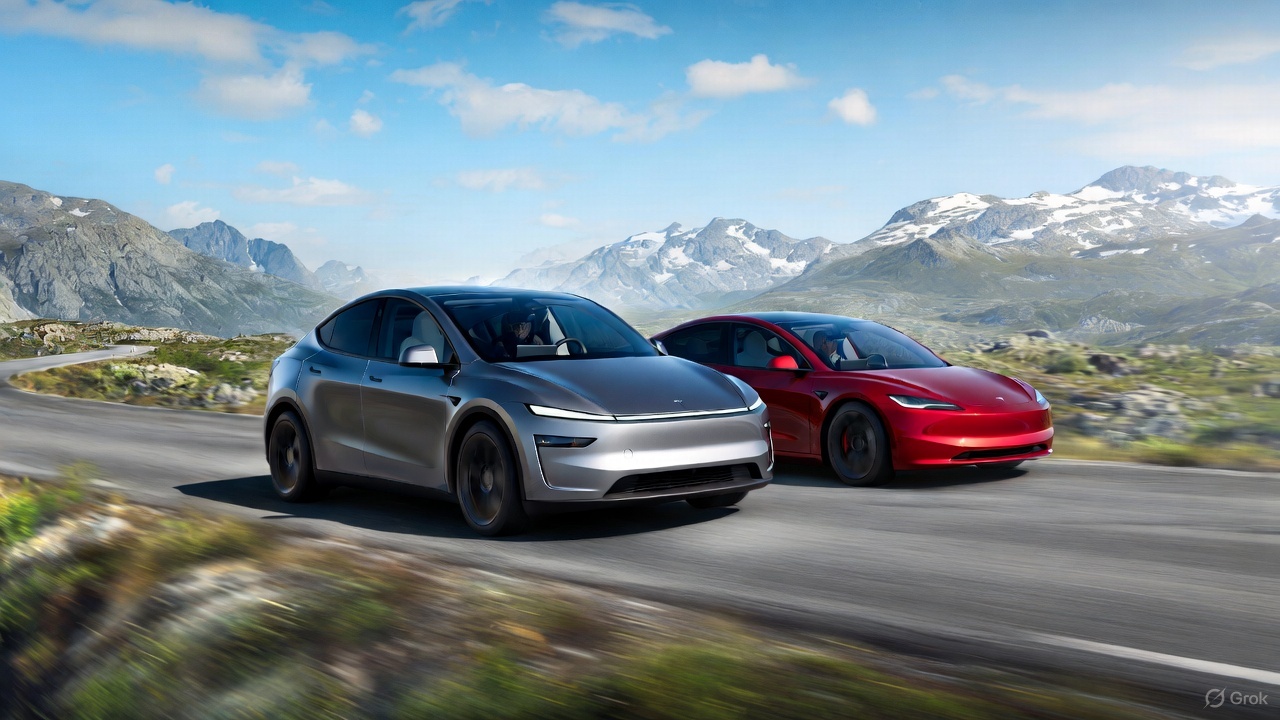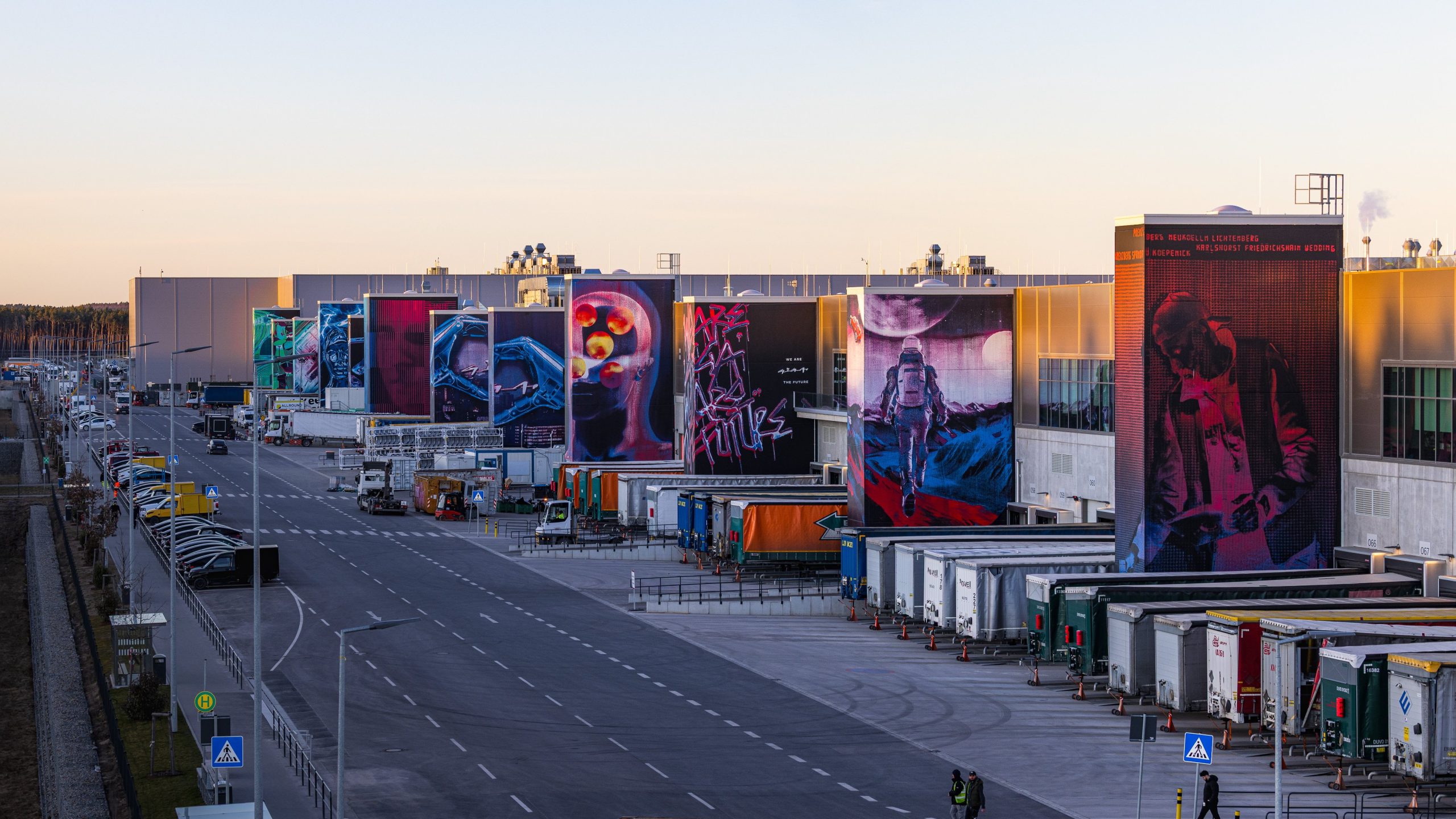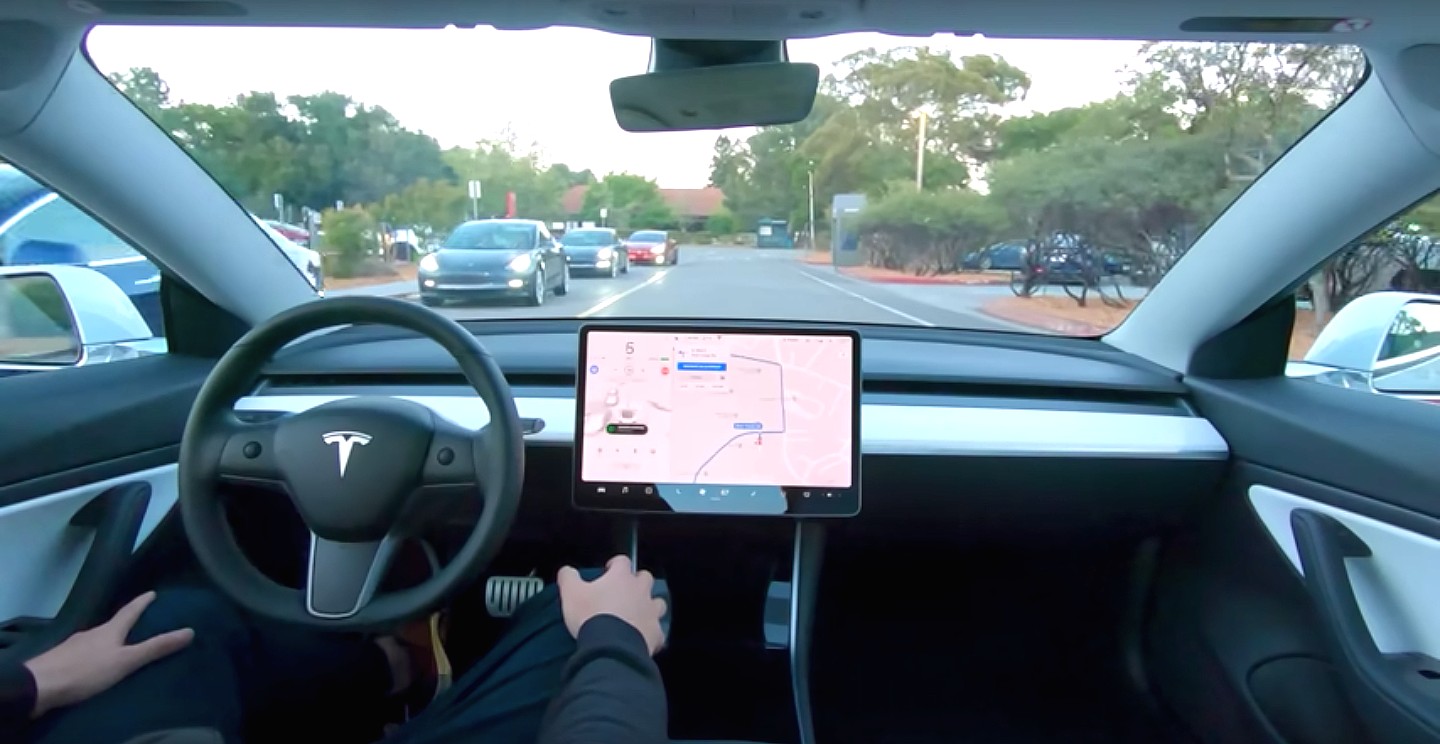News
SpaceX Starship destroyed during cryo test but the next ship is already on the way
SpaceX’s third full-scale Starship prototype has followed a little too closely in the footsteps of its predecessors, suffering a catastrophic failure during its first cryogenic test.
On April 2nd, SpaceX successfully put Starship SN3 through an ambient temperature pressure, allowing the ship to take its first breaths and ensuring that no leaks were present in its massive propellant tanks. Just a handful of hours later, Starship SN3 began its first attempted cryogenic proof test. Neutral liquid nitrogen was loaded into the ship’s liquid oxygen (LOX) tank for a brief period before SpaceX aborted the test due to frozen valves in the ground support equipment (GSE) tasked with feeding the rocket — confirmed by CEO Elon Musk around 7:30 pm PDT.
Around six hours after the first attempt, SpaceX presumably managed to alleviate GSE valve issues and began Starship SN3’s second attempted cryogenic proof test around 11pm local (04:00 UTC). While things started out somewhat normally, they did not end well for the rocket prototype.

For unknown reasons, SpaceX began the second cryo test attempt by only loading Starship’s upper (LOX) tank with supercool liquid nitrogen. Given that Starship is constructed out of stainless steel sheets only slightly thicker than two US quarters, the lower (methane) tank would have almost certainly had to be pressurized, too, likely relying on gaseous (ambient temperature) nitrogen. Already, for a rocket built out of near-continuous metal, that temperature differential could pose a major problem.
Still, for the better part of three hours, things seemed to go exactly as planned, with the rocket venting dozens of times and the upper tank visibly developing a coating of frost as it began to freeze the water vapor right out of the humid Texas air. Alas, around 2:07am local (07:07 UTC), things took a turn for the worse. The unfilled methane tank below the now-LN2-laden LOX tank appeared to crumple, beginning at a small dent that appeared over the course of the test. Gravity took over a few seconds later, further crumpling the methane tank and causing the top-heavy rocket to tip over and the LOX tank to burst.
While admittedly from the armchair, not a lot of this particular failure makes sense. If the bottom methane tank were significantly pressurized with gaseous nitrogen, a rapid loss of structural integrity would have likely been a far more violent ordeal as the gas attempted to escape. Instead, the failure was – relative to the possibilities – extremely gradual. In fact, it almost appeared as if the bottom methane tank was either never actually pressurized or not pressurized nearly enough to withstand the weight of several hundred tons of liquid nitrogen. Given SpaceX’s expertise and familiarity with rocketry, that option thankfully seems vanishingly unlikely.
All other possible explanations are at least as hard to parse, leaving it up to SpaceX or CEO Elon Musk to clarify what transpired if they choose to do so.


On a more positive note, SpaceX has continued to churn out steel rings and bulkheads and assemble them into sections of Starship SN4 – the rocket’s next full-scale prototype – for the last two or so weeks. If Starship SN1, SN2, and SN3 are anything to go by, the fourth full-scale Starship prototype could be ready to head to the pad for testing just a handful of weeks from now, picking up where Starship SN3 left off. Thankfully, the latter rocket’s April 3rd failure appears to have been relatively benign as far as pad hardware goes, likely requiring minimal repair work to be ready for its next test campaign.
While unfortunate, it’s critical to remember that this is all part of SpaceX’s approach to developing new and unprecedented technologies. Be it Falcon 1, Falcon 9 booster recovery, or Falcon 9 fairing recovery, all groundbreaking SpaceX efforts have begun with several consecutive failures before the first successes – and the first streaks of consecutive successes. Given Musk’s September 2019 claim that SpaceX is putting just ~5% of its resources into Starship, prototypes like Mk1, SN1, and SN3 are being fabricated for pennies on the dollar.
As a schedule setback, SpaceX is building ships so quickly that any single prototype failure shouldn’t cause more than a handful of weeks of delays, and the goal is to produce an entire Starship every week by the end of 2020. For now, SpaceX will hopefully learn from each failure during developmental testing and roll those lessons learned into each future prototype.

News
Tesla Model 3 and Model Y named top car buys in Norway
Despite growing competition from European and Korean brands, both models stood out for their balance of price, performance, and everyday usability.

Norway’s annual roundup of the best car purchases featured Tesla’s two main sellers this year, with the Model 3 and Model Y securing top positions in their respective segments.
Despite growing competition from European and Korean brands, both models stood out for their balance of price, performance, and everyday usability. The verdict comes as electric vehicle adoption remained above 95% of new vehicle sales in the country.
Tesla Model 3 strengthens its value position
Among compact EVs, the Tesla Model 3 maintained its position as the best overall buy thanks to its strong blend of performance, efficiency, and updated features. Reviewers noted that every trim offered compelling value, especially with the all-electric sedan’s improved cabin ergonomics and the return of the turn-signal stalk, which was one of the few previous complaints among drivers.
The Model 3’s mix of long-range capability, low operating costs, and responsive handling has continued to set the benchmark for compact EVs in Norway. While competitors from Hyundai, Volkswagen, and Peugeot have narrowed the gap, Tesla’s price-to-capability ratio has remained difficult to beat in this segment, Motor.no reported.
“The Model 3 clearly offers the best value for money in the compact class, no matter which version you choose. Now it also gets the turn signal lever back. This eliminates one of the few flaws in a driving environment that many believe is the best on the market,” the publication wrote.
Tesla Model Y claims its crown
The Tesla Model Y emerged as Norway’s top family-car purchase this year. The latest refresh introduced improvements in ride quality, styling, and interior materials, allowing the Model Y to deliver a more premium driving experience without a substantial price increase.
Reviewers praised its spacious cabin, strong safety profile, and practical range, all of which reinforced its appeal for families needing an all-purpose electric crossover. The Model Y remains especially notable given its continued popularity in Norway even as Tesla faces declining sales in other global markets.
“The Model Y is back as the winner in the family class. The upgrade in the new year was even more extensive than expected. It is a slightly more elegant and significantly more comfortable Model Y that solidifies its position as Norway’s best car purchase in the most important class,” the Norwegian motoring publication noted.
News
Tesla Giga Berlin is still ramping production to meet Model Y demand: plant manager
Tesla Gigafactory Berlin has expanded to two full shifts, as per the facility’s plant manager, and a lot of it is due to Model Y demand.

Tesla Gigafactory Berlin has expanded to two full shifts, as per the facility’s plant manager, and a lot of it is due to Model Y demand. While registrations in some countries such as Sweden have fallen sharply this year, the company’s sales in other key territories have been rising.
Giga Berlin shifts to two shifts
Giga Berlin factory manager André Thierig told the DPA that the facility has been running two shifts since September to manage a surge in global orders. And due to the tariff dispute with the United States, vehicles that are produced at Giga Berlin are now being exported to Canada.
“We deliver to well over 30 markets and definitely see a positive trend there,” Thierig said.
Despite Giga Berlin now having two shifts, the facility’s production still needs to ramp up more. This is partly due to the addition of the Tesla Model Y Performance and Standard, which are also being produced in the Grunheide-based factory. Interestingly enough, Giga Berlin still only produces the Model Y, unlike other factories like Gigafactory Texas, the Fremont Factory, and Gigafactory Shanghai, which produce more than one type of vehicle.
Norway’s momentum
Norway, facing an imminent tax increase on cars, has seen a historic spike in Tesla purchases as buyers rush to secure deliveries before the change takes effect, as noted in a CarUp report. As per recent reports, Tesla has broken Norway’s all-time annual sales record this month, beating Volkswagen’s record that has stood since 2016.
What is rather remarkable is the fact that Tesla was able to achieve so much in Norway with one hand practically tied behind its back. This is because the company’s biggest sales draw, FSD, remains unavailable in the country. Fortunately, Tesla is currently hard at work attempting to get FSD approved for Europe, a notable milestone that should spur even more vehicle sales in the region.
News
Tesla launches crazy Full Self-Driving free trial: here’s how you can get it

Tesla is launching a crazy Full Self-Driving free trial, which will enable owners who have not purchased the suite outright to try it for 30 days.
There are a handful of stipulations that will be needed in order for you to qualify for the free trial, which was announced on Thursday night.
Tesla said the trial is for v14, the company’s latest version of the Full Self-Driving suite, and will be available to new and existing Model S, Model 3, Model X, Model Y, and Cybertruck owners, who will have the opportunity to try the latest features, including Speed Profiles, Arrival Options, and other new upgrades.
🚨 Tesla is launching a free 30-day trial of Full Self-Driving in North America for owners.
It includes every model, but you need v14.2 or later, and you cannot have already purchased the suite outright. https://t.co/8CNmxxOkVl
— TESLARATI (@Teslarati) November 27, 2025
You must own one of the five Tesla models, have Full Self-Driving v14.2 or later, and have an eligible vehicle in the United States, Puerto Rico, Mexico, or Canada.
The company said it is a non-transferable trial, which is not redeemable for cash. Tesla is reaching out to owners via email to give them the opportunity to enable the Full Self-Driving trial.
Those who are subscribed to the monthly Full Self-Driving program are eligible, so they will essentially get a free month of the suite.
Once it is installed, the trial will begin, and the 30-day countdown will begin.
Tesla is making a major push to increase its Full Self-Driving take rate, as it revealed that about 12 percent of owners are users of the program during its recent earnings call.
Tesla CFO Vaibhav Taneja said during the call:
“We feel that as people experience the supervised FSD at scale, demand for our vehicles, like Elon said, would increase significantly. On the FSD adoption front, we’ve continued to see decent progress. However, note that the total paid FSD customer base is still small, around 12% of our current fleet.”
Earlier today, we reported on Tesla also launching a small-scale advertising campaign on X for the Full Self-Driving suite, hoping to increase adoption.
Tesla Full Self-Driving warrants huge switch-up on essential company strategy
It appears most people are pretty content with the subscription program. It costs just $99 a month, in comparison to the $8,000 fee it is for the outright purchase.









